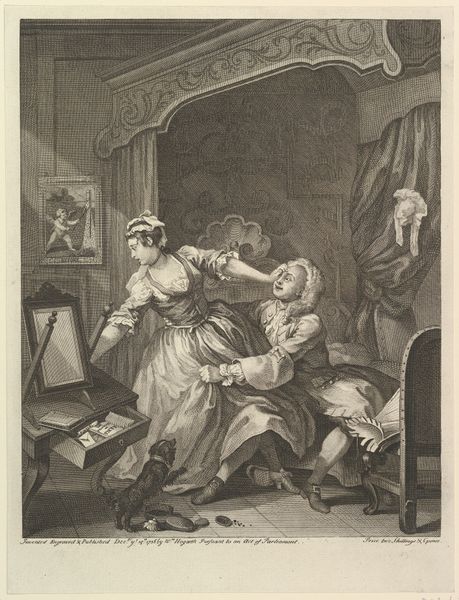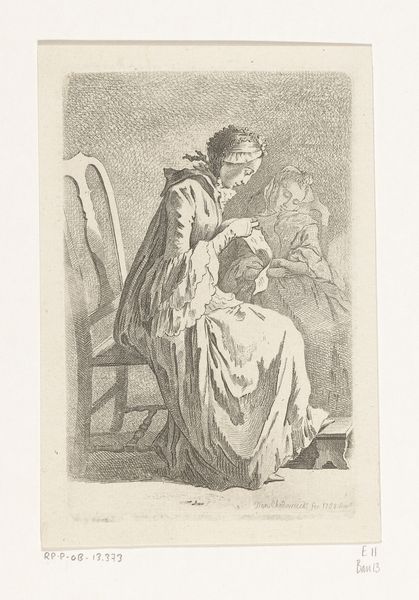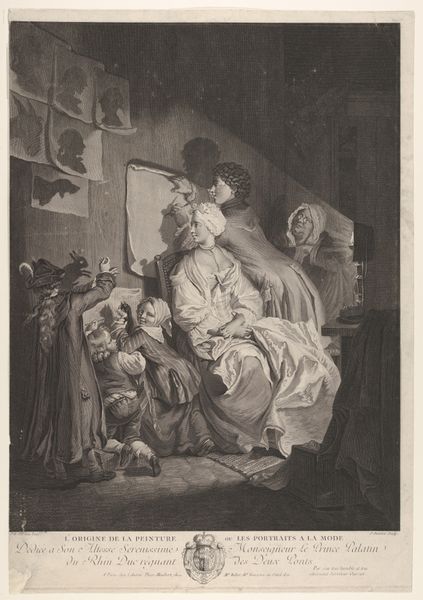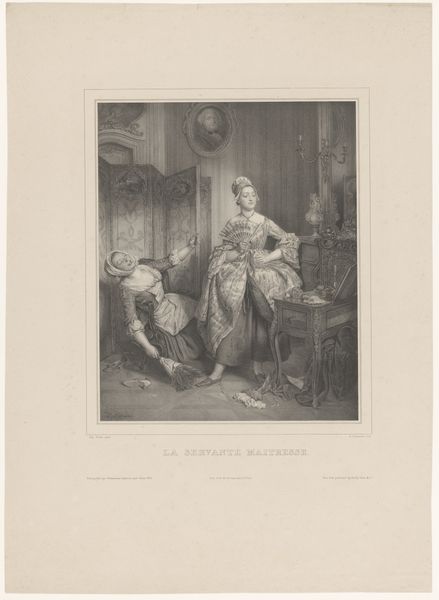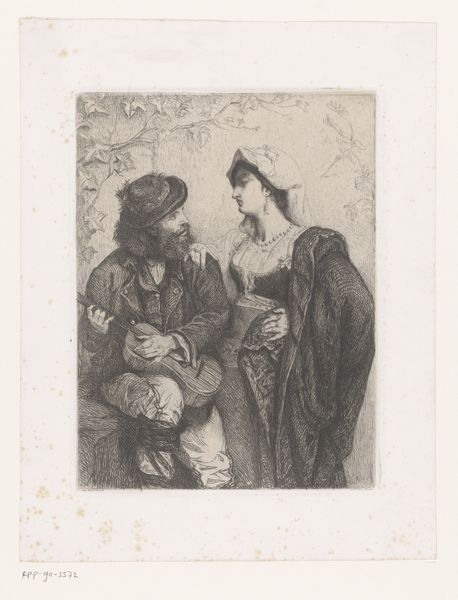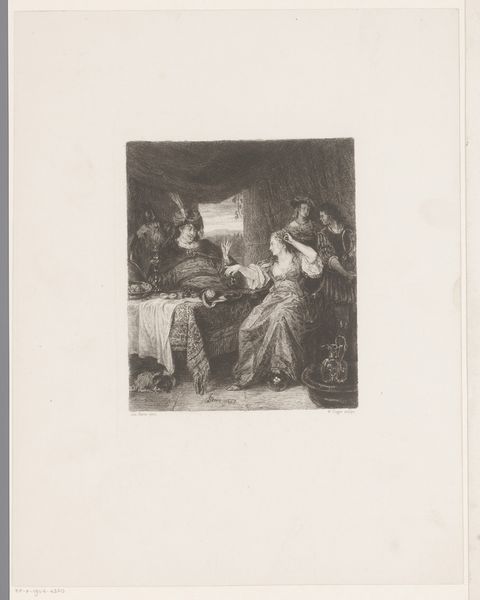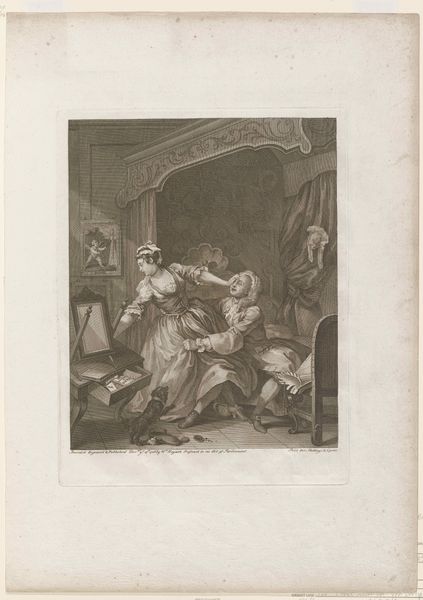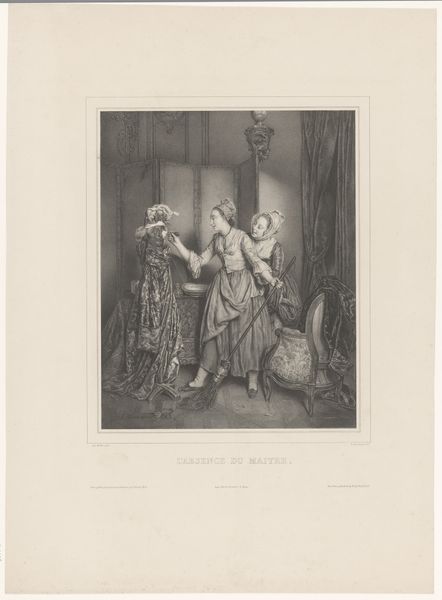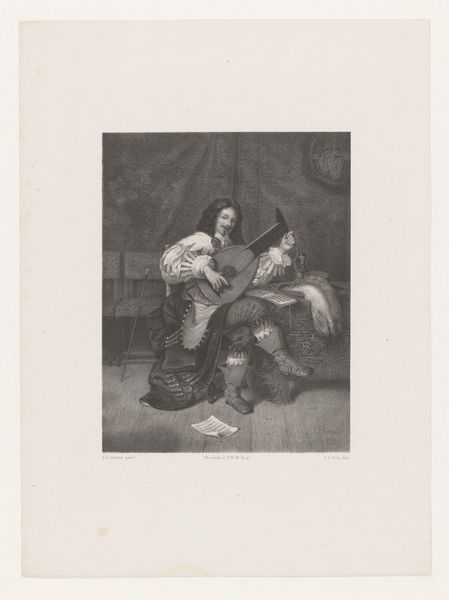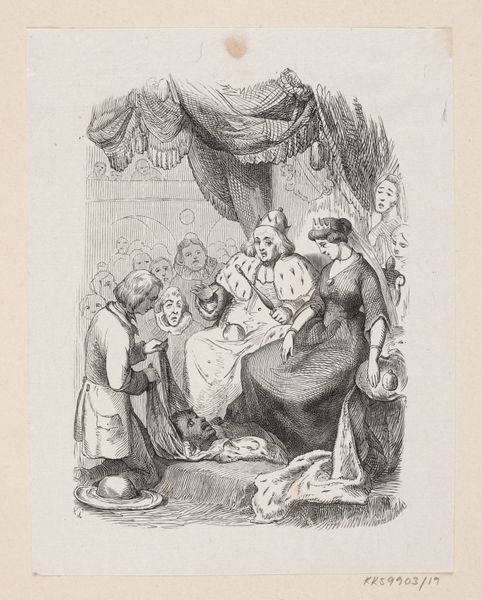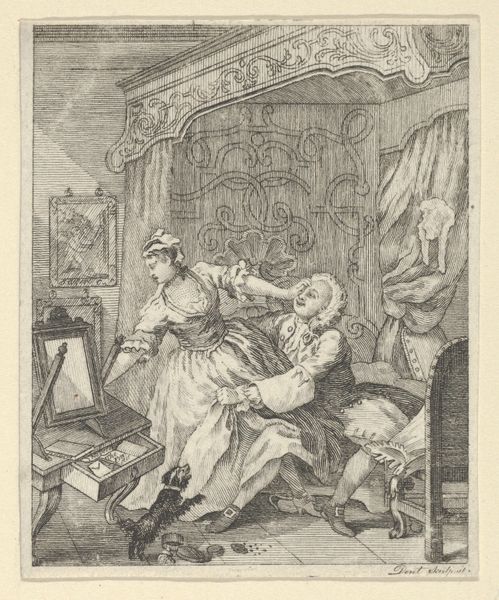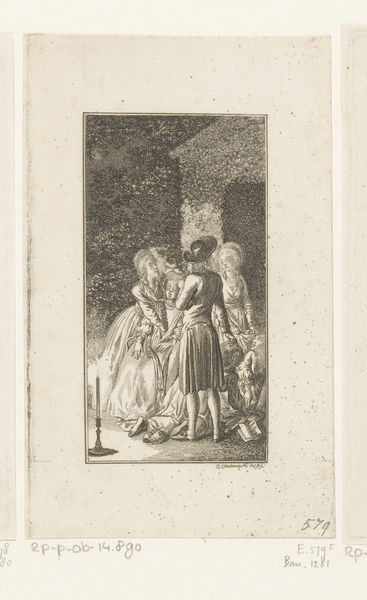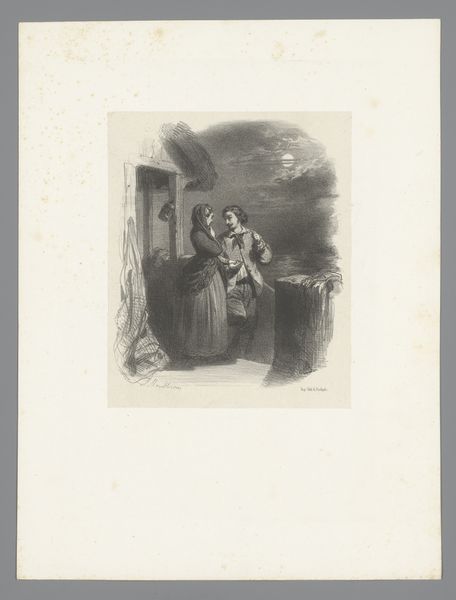
Falstaff in the Buck Basket (Shakespeare, Merry Wives of Windsor, Act 3, Scene 3) 1793 - 1852
0:00
0:00
drawing, print
#
pencil drawn
#
photo of handprinted image
#
drawing
#
light pencil work
#
photo restoration
# print
#
pencil sketch
#
light coloured
#
white palette
#
19th century
#
men
#
pencil work
#
tonal art
Dimensions: Plate: 26 × 17 1/2 in. (66 × 44.5 cm)
Copyright: Public Domain
Curator: Well, here we have a print after a drawing depicting Falstaff in the Buck Basket, based on Shakespeare's *Merry Wives of Windsor*, dating sometime between 1793 and 1852. It's currently held at The Met. What strikes you about it? Editor: Immediately, a flurry of discomfort! A heaviness, not in the visual sense—the line work is quite delicate—but emotionally. All that panicked flurry and contained humiliation jammed into a woven container. Talk about being caught in a bind, literally! Curator: It's remarkable how the artist, working with what appears to be pencil and printmaking techniques, captures the chaotic energy of the scene. The fabric billowing, the expressions… There's almost a feverish quality to the whole composition. I wonder about the labor it took to weave a basket capable of holding someone as corpulent as Falstaff—clearly not just any wicker will do! Editor: Exactly. Consider the socioeconomic backdrop: we have this elaborate production of humiliation played out against a very real and tangible labor involved in the crafting of such an object. What was that process? Who wove the buck basket and with what material? Whose shoulders ultimately bore its heavy load, both literally and metaphorically? We see this performance of wealth with a heavy price tag. Curator: You make me wonder if the weaving of the basket somehow mirrors the weaving of the plot itself. The intricate strands coming together to create a trap. There's a raw, immediate quality to drawing as a medium that complements the bawdy energy of the play itself. It feels like we’re seeing a stolen glimpse. A charcoal study, a fleeting expression rendered permanent by the printing process…almost clandestine. Editor: Indeed! I would want to dig deeper into that printing process itself. What kind of paper, ink, etching process and distribution was at play, for example, given the class politics of enjoying live theatre at the time, this reproduction makes accessible an image to another strata of consumer and offers a chance to engage differently with ideas around social performance and its shaming. The means of reproduction in effect changes what the product "is", just as much as does our basket weaving. Curator: The more I look at it, the more I see this artwork acting as its own kind of basket – gathering up anxieties about class, gender, and desire. So many narratives woven into a single object. Editor: Art history in a nutshell. Until you notice the means and labor invested, as you stated, it all disappears in front of you and stays silent.
Comments
No comments
Be the first to comment and join the conversation on the ultimate creative platform.
